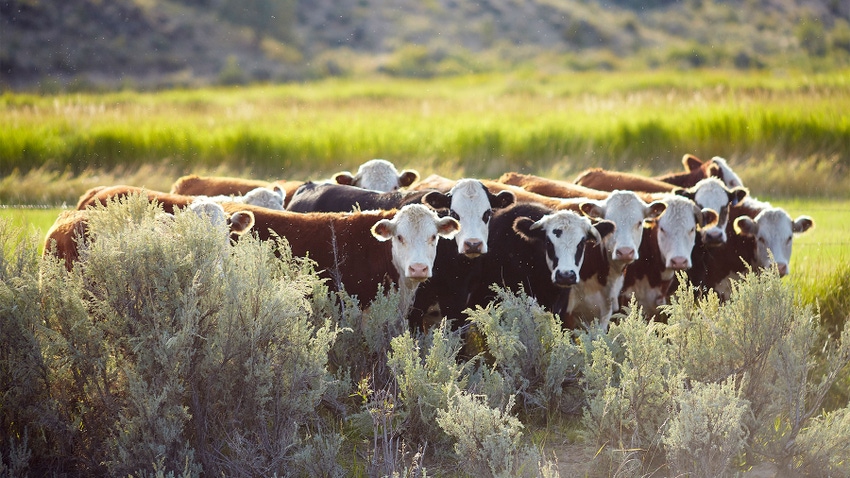August 25, 2023

by Garth Ruff
Every five years, a group of university animal and meat scientists and Extension specialists, in conjunction with the National Cattlemen’s Beef Association and the Beef Checkoff, complete the National Beef Quality Audit.
The audit consists of two main parts, interviews with supply chain partners (packers, retailers, food service and further processors) and live animal or carcass evaluation in the major packing plants across the U.S. Audits are completed for both fed steers and heifers, as well as cows and bulls.
Findings from the 2022 audit were recently released. Here are a few highlights, as well as some take-home messages and areas for improvement in live cattle production.
A variety of questions were asked on the topics of beef quality factors, including how and where the cattle were raised, lean fat and bone, weight and size, visual characteristics, food safety, eating satisfaction, cattle genetics, sustainability, effects of the COVID-19 pandemic, and strengths and weakness of the fed-cattle industry.
Some conclusions from the fed-steer and heifer interview portion of the audit include:
Branded beef programs continue to increase in popularity.
Food safety has become part of companies’ business model, and they associate food safety with product quality.
All market sectors believed that traceability translates to “back to the ranch,” and many want a stronger traceability system in the U.S.
Uniformity of the weight and size of products is most important across sectors.
American-produced beef continues to excel both domestically and abroad, largely because of the high-quality product.
Eating quality is a market expectation and is directly attributed to high-quality genetics.
No surprises there. Perhaps the one worth noting is the point on traceability. This is a topic that has been tossed around for 20-plus years in the beef industry. It would appear we are moving toward some sort of national traceability system, the details of which remain to be seen.
Some thoughts on cows and bulls from the audit include:
The image of the market cow and bull sector has improved over the past five years.
The market cow and bull industry has made strides in increasing animal well-being. However, increased producer education on animal well-being (e.g., timely culling, birdshot) is warranted.
Again, no big surprises, as cull prices have been historically high over the past half-decade. Timely culling remains a challenge in cows with poor muscle scores and full udders. In the Beef Quality Assurance era, I am a little perplexed that birdshot in cull animals is an issue; that certainly does not fall under proper animal handling.
Harvest floor observations
Auditors also completed on-rail carcass measurements and evaluated live cattle characteristics as they entered the harvest floor. While I would be more than happy to take a deep dive into the details of the audit someday, the major fed-beef conclusions were made when compared to previous audits:
Marbling scores and the percentages of Prime and Choice all increased.
Back fat, muscling and carcass weights all increased.
Increases in fat thickness and heavier weights contribute to large increases in percentages of YG 4 and 5 carcasses.
Usage of electronic identification increased.
Ilack-hided cattle increased, followed by a decrease in Holstein pattern.
Total dairy carcasses observed in-plant and through instrument grading are much lower when compared to NBQA-2016
What does this all mean? First, I think it shows as an industry we are doing a better job selecting beef cattle genetics that have the capacity to produce high-quality beef. In the first audit in 1991, beef quality was one of the great concerns identified.
It would also appear there has been some incentive in the market to feed cattle longer. COVID had an effect on carcass weights because of the backlog of cattle we saw in 2021. However, the lack of supply due to the reduction of the western cow herd can also be attributed as a cause for heavier cattle. At some point, I wonder, do we get them too heavy? What is the cost and impact on red meat yield in these heavy-fed steers and heifers?
Along with feeding and marketing heavier cattle, carcass bruising was recorded at its highest rate since 2005, with 47.7% of cattle being unbruised. The majority of bruises were minimal in size ranging from the size of a quarter to a deck of cards. The loin was the most often location of bruising.
While our fed cattle have gotten larger and heavier, our primary mode of transporting cattle, the possum belly trailer, hasn't been changed in terms of design. Cattle have been observed hitting their backs (loin) as they enter the belly of those trailers.
While the 2022 National Beef Quality Audit was largely positive with regard to food safety and beef quality, there is still room for improvement in the industry. We can continue to improve cattle health, reduce instances of foreign materials in cattle, and continue to optimize efficiency throughout the beef production system as it relates to sustainability as defined by our partners.
Ruff is the OSU Extension beef field specialist. He is also a member of the OSU Extension beef team that publishes the weekly Ohio Beef Cattle letter, which can be found at beef.osu.edu.
You May Also Like




